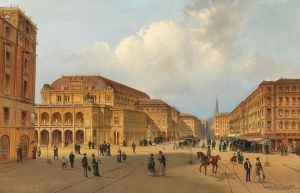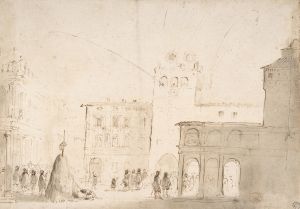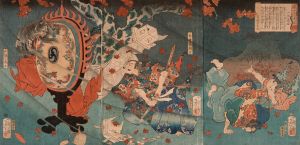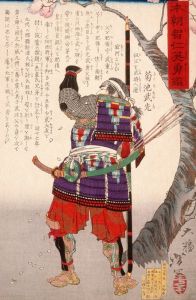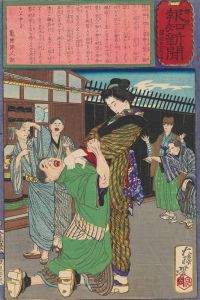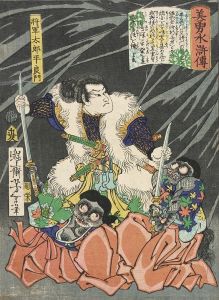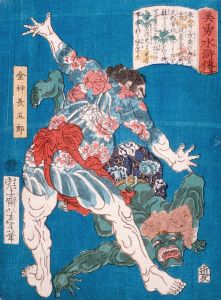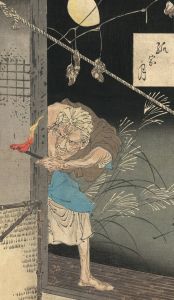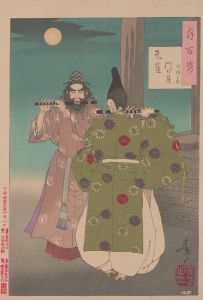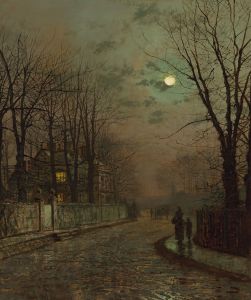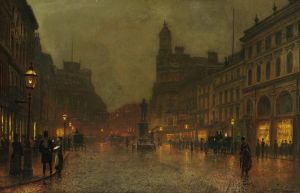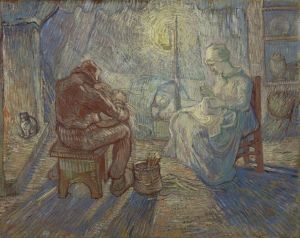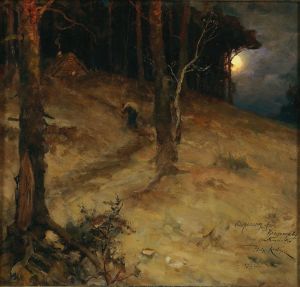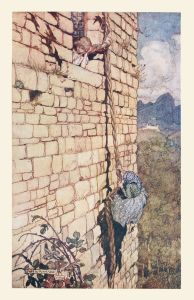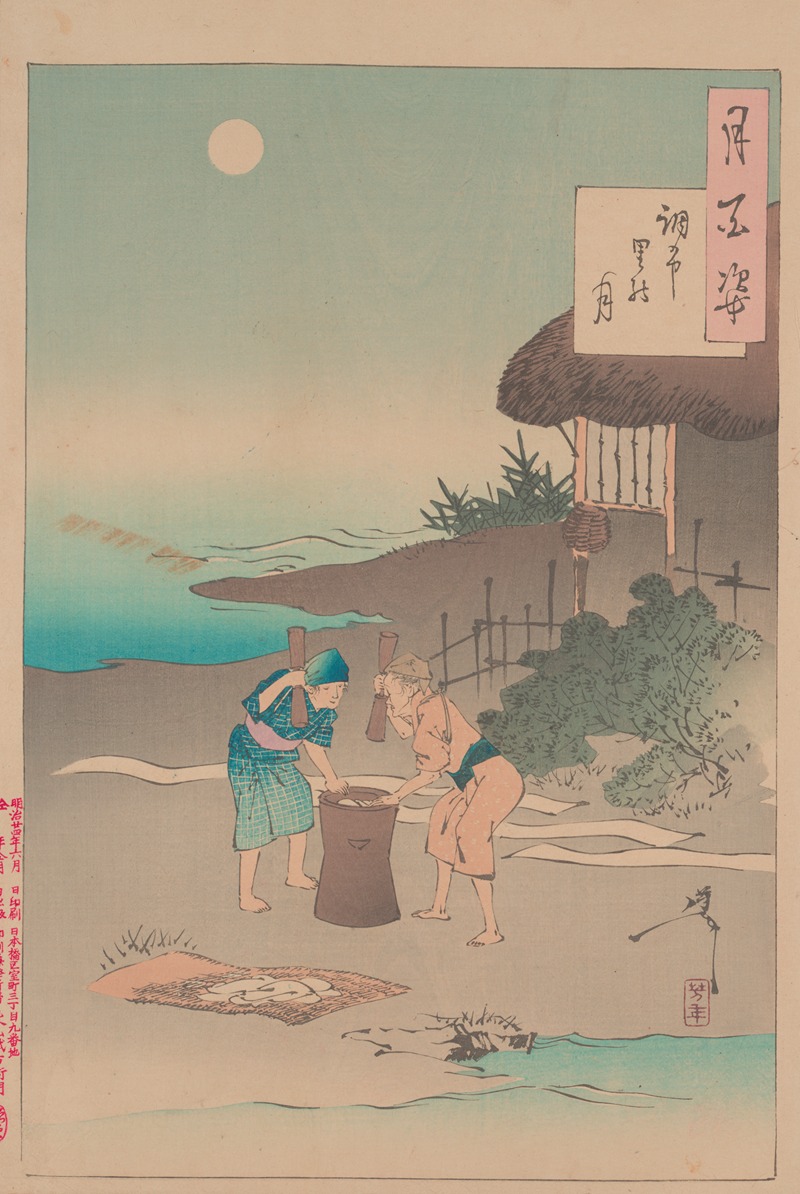
Chofu village moon
A hand-painted replica of Tsukioka Yoshitoshi’s masterpiece Chofu village moon, meticulously crafted by professional artists to capture the true essence of the original. Each piece is created with museum-quality canvas and rare mineral pigments, carefully painted by experienced artists with delicate brushstrokes and rich, layered colors to perfectly recreate the texture of the original artwork. Unlike machine-printed reproductions, this hand-painted version brings the painting to life, infused with the artist’s emotions and skill in every stroke. Whether for personal collection or home decoration, it instantly elevates the artistic atmosphere of any space.
"Chofu Village Moon" is a woodblock print by the renowned Japanese artist Tsukioka Yoshitoshi, part of his celebrated series "One Hundred Aspects of the Moon" (Tsuki hyakushi). This series, created between 1885 and 1892, is considered one of Yoshitoshi's masterpieces and a significant contribution to the ukiyo-e genre, which flourished during the Edo and Meiji periods in Japan.
Yoshitoshi, born in 1839, was a pivotal figure in the transition from traditional ukiyo-e to more modern forms of Japanese art. His work is characterized by its dramatic intensity, innovative compositions, and a deep exploration of themes such as beauty, violence, and the supernatural. "One Hundred Aspects of the Moon" is a prime example of his mature style, showcasing his technical skill and narrative depth.
"Chofu Village Moon" depicts a scene inspired by classical Japanese literature and folklore, a common theme throughout the series. The print illustrates a moment from the story of Chofu Village, which is often associated with the legend of the poet Ono no Komachi. Komachi, a famous poet of the Heian period, is celebrated for her beauty and her poignant, melancholic poetry. In this particular print, Yoshitoshi captures the serene and contemplative atmosphere of a moonlit night in Chofu Village, reflecting the poetic and ephemeral qualities often found in Komachi's work.
The composition of "Chofu Village Moon" is notable for its use of light and shadow, a technique Yoshitoshi employed to create a sense of depth and mood. The moon, a central motif in the series, symbolizes not only the passage of time but also the transient nature of life and beauty. This print, like many others in the series, combines elements of realism with an ethereal quality, inviting viewers to reflect on the themes of impermanence and nostalgia.
Yoshitoshi's "One Hundred Aspects of the Moon" series was produced during a time of great change in Japan, as the country was rapidly modernizing and Western influences were becoming more pronounced. Despite these changes, Yoshitoshi remained committed to traditional Japanese aesthetics and storytelling, which is evident in the meticulous detail and cultural references found in "Chofu Village Moon."
The series was published by Akiyama Buemon, a prominent publisher of ukiyo-e prints during the Meiji era. Each print in the series, including "Chofu Village Moon," was created using the traditional woodblock printing technique, which involves carving an image into a wooden block, applying ink, and pressing it onto paper. This method allowed for the production of multiple copies, making Yoshitoshi's work accessible to a broader audience.
"Chofu Village Moon" and the entire "One Hundred Aspects of the Moon" series have been praised for their artistic and historical significance. They represent a culmination of Yoshitoshi's career and a testament to his enduring legacy in the world of Japanese art. Today, these prints are highly valued by collectors and are featured in museum collections worldwide, admired for their beauty and the rich cultural narratives they convey.





